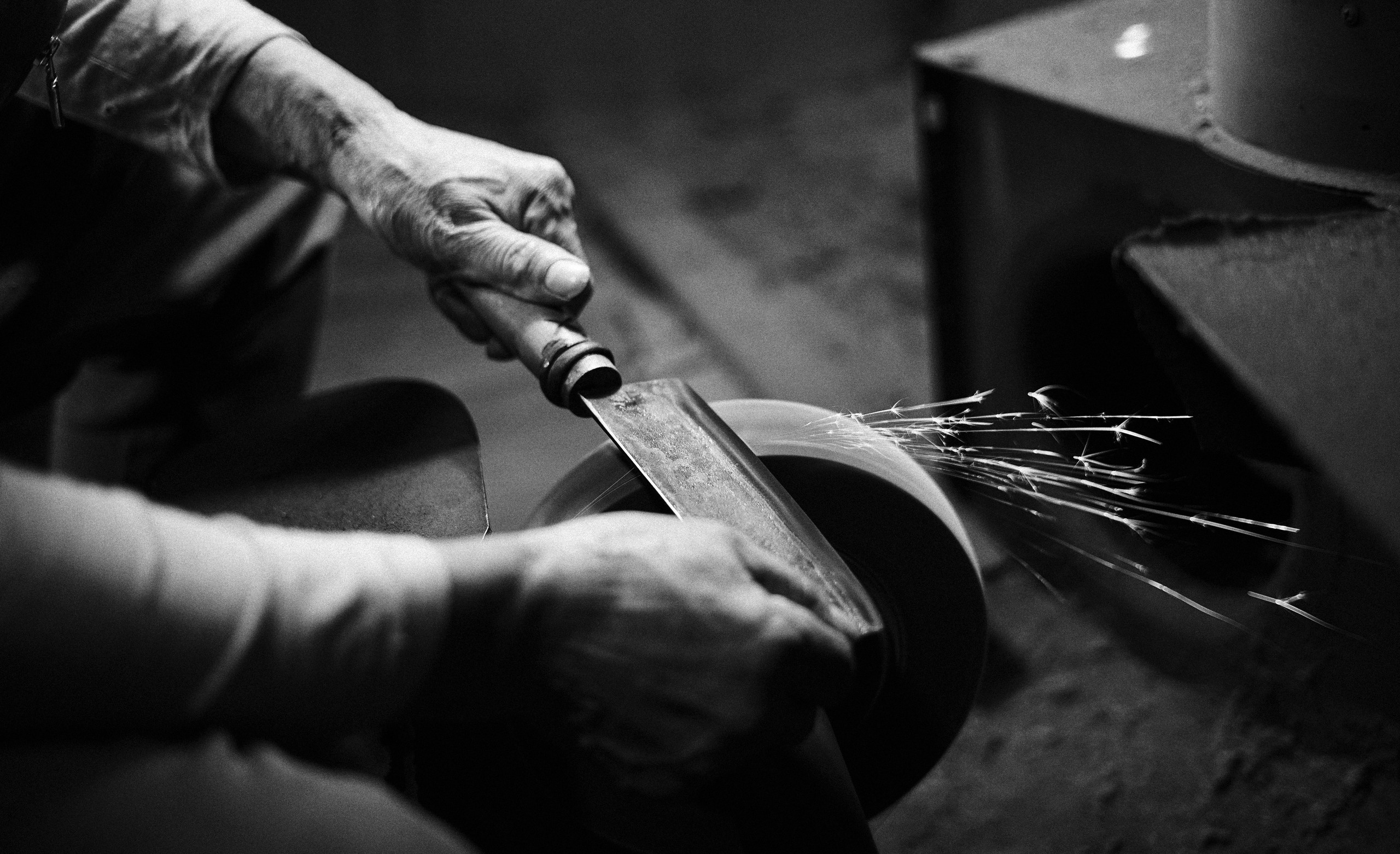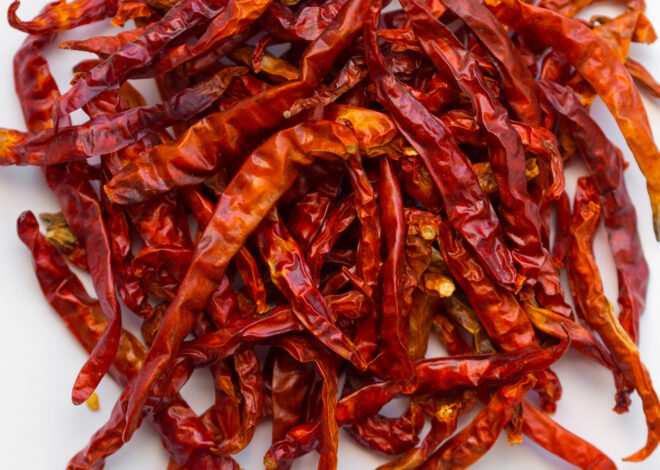
How To Sharpen Knife Blades
Today we are going to learn how to sharpen knife blades. A sharp knife can be your best friend in the kitchen. It slices through ingredients with ease, turning meal prep into a delightful experience. But what happens when that trusty blade starts to dull?
Cooking becomes frustrating and tedious, slowing you down when you’re trying to whip up something delicious. Knowing how to sharpen knife blades is an essential skill for any home cook or professional chef.
Not only does it enhance your cooking efficiency, but it also ensures safety by reducing the risk of slips and accidents while cutting. Whether you’ve got a cherished family heirloom or a modern chef’s knife, keeping those blades sharp will elevate your culinary game like nothing else!
Let’s dive into the methods for sharpening knives so you can get back to enjoying every slice and dice in the kitchen.
The Importance of Sharp Knife Blades
Sharp knife blades are essential for precision and efficiency in the kitchen. When a knife is well-sharpened, it requires less force to cut through food. This means cleaner cuts and minimal bruising of ingredients.
A sharp blade also enhances safety. Dull knives are more likely to slip while cutting, leading to accidents. With a sharp edge, you maintain better control over your movements. Moreover, using sharp knives can improve the overall flavor of your dishes.
Clean cuts preserve the structural integrity of fruits and vegetables, allowing them to retain their juices and taste. In professional settings, chefs understand that time is money. A sharper knife leads to quicker meal preparation without compromising quality or presentation.
Investing time in keeping your knife blades sharp not only boosts performance but also transforms cooking into an enjoyable experience rather than a chore.
Different Methods for Sharpening Knife Blades
When it comes to sharpening knife blades, several methods can cater to your preferences and skill level. Each technique has its benefits. Experiment with these techniques to find what works best for your knives and sharpening needs!
A. Using a Whetstone
Using a whetstone is one of the most traditional and effective methods for sharpening knife blades. This ancient technique requires practice but offers exceptional control over the sharpening process.
Start by soaking your whetstone in water for about 10 to 15 minutes. A wet stone helps reduce friction and creates a smoother edge. Once ready, place it on a stable surface, ensuring it won’t slip during use.
Hold your knife at a consistent angle—usually around 20 degrees—for optimal sharpness. Begin with gentle pressure, moving the blade across the stone in smooth, sweeping motions. Alternate sides regularly to maintain an even edge.
As you sharpen, listen for that satisfying sound—a quiet swish means you’re doing it right. After several passes on each side, wipe the blade clean and check its progress against your thumb or paper; you’ll feel or see when it’s truly sharp!
B. Using a Sharpening Steel
Sharpening steel is a handy tool for maintaining knife edges. Unlike traditional sharpeners, it doesn’t remove material; instead, it aligns the blade’s edge. This method is perfect for quick touch-ups in between more thorough sharpening sessions.
To use sharpening steel effectively, hold the rod vertically and place its tip on a stable surface. Position your knife at a 20-degree angle against the steel. Glide the blade downwards from heel to tip while applying light pressure. Repeat this process several times on each side of the blade.
While it may seem simple, mastering this technique takes practice. The key is consistency in both angle and pressure to achieve optimal results. Regularly using sharpening steel can help prolong the life of your knives and keep them ready for action when you need them most!
C. Using an Electric Knife Sharpener
An electric knife sharpener is a convenient tool for anyone looking to maintain their knives effortlessly. With just the push of a button, you can achieve professional sharpening results at home.
These devices often come with preset angles, making it easy for beginners to get it right without much practice. Simply insert your knife into the designated slot and let the machine do the work.
Most models have multiple stages that refine and polish the blade as well. This ensures not only a sharp edge but also smooth finishes that enhance performance.
While electric sharpeners are quick and efficient, they may remove more metal than traditional methods. Regular use could affect the longevity of your knives over time, so it’s wise to use them sparingly or as needed.
For those who value speed and simplicity in their kitchen routine, an electric knife sharpener can be a worthwhile investment.
Step-by-Step Guide to Sharpening Knife Blades
Step 1: Gathering the Necessary Tools and Materials
Before diving into the art of sharpening knife blades, gather your tools. This step sets the foundation for a successful experience.
You’ll need a quality whetstone or sharpening steel, depending on your method of choice. A whetstone typically comes with two sides: coarse and fine. The coarse side is perfect for dull blades, while the fine side polishes them to perfection.
If you opt for an electric sharpener, ensure it’s designed for kitchen knives. These devices can simplify the process but may lack that personal touch only manual methods offer.
Don’t forget about safety gear! Cut-resistant gloves are wise to have on hand. They protect your fingers from unexpected slips as you concentrate on achieving that razor-sharp edge.
Find a stable work surface where you can feel comfortable and focused during this task. A clean cutting board works well; just make sure it won’t slide around as you sharpen away.
Step 2: Preparing the Knife for Sharpening
Before you start sharpening, it’s essential to prepare your knife properly. First, ensure that the blade is clean. Any food particles or residue can interfere with the sharpening process and damage the edge.
Next, inspect the knife for any noticeable nicks or chips along the blade. If there are significant imperfections, they may require extra attention during sharpening.
Secure your workspace by choosing a stable surface. This will help prevent accidents while you sharpen. Additionally, make sure you have adequate lighting to clearly see what you’re doing.
Hold your knife firmly by its handle and be mindful of your grip throughout the process. A secure hold ensures better control as you work on restoring that sharp edge. Taking these steps sets a solid foundation for effective sharpening ahead.
Step 3: Choosing the Right Angle for Sharpening
Choosing the right angle for sharpening your knife blade is crucial. A typical angle ranges from 15 to 20 degrees. This range will depend on the type of knife you are working with.
For instance, Japanese knives often perform best at a sharper angle of around 15 degrees. This provides precision and allows for delicate slicing. On the other hand, Western-style knives benefit from a slightly wider angle of about 20 degrees, which adds strength and durability.
To maintain consistency during sharpening, visualize or use a guide if you’re unsure. Keeping this consistent helps in achieving an even edge across the blade length.
Remember that adjusting your technique based on specific tasks can enhance performance too. For heavier duty work like chopping through tougher ingredients, leaning towards a broader angle might serve better than aiming for razor-thin precision.
Step 4: Beginning the Sharpening Process
Now it’s time to put your skills into action. Position the knife at the chosen angle, typically between 15 to 20 degrees for most kitchen knives. This is crucial for achieving a sharp edge without damaging the blade.
If you’re using a whetstone, start with the coarse side if your knife needs significant sharpening. Glide the blade across the stone in smooth, even strokes. Apply light pressure—let the stone do its work.
For sharpening steel, hold it vertically and draw your knife down against it. Alternate sides consistently to maintain balance on both edges.
With an electric sharpener, simply follow manufacturer instructions for optimal results. Allowing machine precision can save you time while providing great outcomes.
Monitor progress as you go along; this keeps you aware of how much more sharpening is needed before moving on to finishing touches.
Step 5: Finishing Touches and Testing the Sharpness
Once you’ve completed the sharpening process, it’s time to add those finishing touches. Carefully wipe down the blade with a clean cloth to remove any metal filings or debris. This step is crucial for ensuring that your knife is pristine and ready for use.
Next, test the sharpness of your blade. A simple way to do this is by slicing through a piece of paper. If it glides effortlessly without tearing, you’ve done an excellent job.
You can also try cutting through softer foods like tomatoes or onions. The ease with which your knife slices will confirm its sharpness level.
If you notice resistance or struggle while cutting, consider repeating some sharpening steps until you’re satisfied with the result. Taking these extra moments ensures that every meal prep experience will be efficient and enjoyable.
Maintenance Tips for Keeping Your Knives Sharp
Keeping your knives sharp is all about consistent care. Regular maintenance can prolong their lifespan and enhance performance. After each use, wash and dry your knives thoroughly to prevent rust or corrosion. Avoid tossing them in the dishwasher; handwashing is gentler.
Store your knives properly. Use a knife block, magnetic strip, or blade guards to protect the edges from damage. Storing them loosely in a drawer can dull blades over time. Consider honing your knives regularly with a sharpening steel. This realigns the edge without removing material, keeping it sharp longer.
Be mindful of what you cut on. A wooden or plastic cutting board is kinder to knife edges than glass or stone surfaces. Adopting these habits will ensure that every slice remains effortless and precise for as long as possible.
Conclusion
Having sharp knife blades is essential for both safety and efficiency in the kitchen. Dull knives can lead to accidents as they require more force, increasing the chance of slips. Plus, a well-sharpened blade makes food preparation quicker and more enjoyable.
There are various methods for sharpening your knives, including whetstones, sharpening steels, and electric sharpeners. Each method has its advantages depending on your skill level and preference. Understanding these options gives you flexibility in maintaining that perfect edge.
The step-by-step guide offers a practical approach to getting started with knife sharpening. Gathering the right tools ensures you have everything at hand before diving into the process. Preparing your knife properly sets a solid foundation for effective sharpening.
Choosing the correct angle is crucial; it determines how efficiently you’ll be able to hone that blade’s edge. When beginning the actual sharpening process, patience goes a long way—take your time to achieve optimal results without rushing through any steps.
Finishing touches matter too! Testing sharpness after you’ve completed honing lets you know if adjustments are necessary or if you’re ready to slice away confidently.
Regular maintenance will help keep your knives sharper longer between sharpenings. Simple tips like proper cleaning and storage can significantly extend their lifespan while maintaining peak performance.
With this knowledge in hand about how to sharpen knife blades effectively, you’re now equipped not just with skills but also confidence in handling one of your most essential kitchen tools.




Great post! I completely agree with how essential it is to keep knives sharp—not only for efficiency but also for safety. Dull knives can make cooking frustrating and lead to unnecessary accidents. I’ve always used a whetstone, but your breakdown of the different sharpening methods has me thinking about trying out an electric sharpener for convenience.
Do you think there’s a big difference in the long-term performance of knives sharpened manually with a whetstone versus an electric sharpener? Also, how often do you recommend sharpening knives to maintain their edge without overdoing it?
Thanks for the detailed guide—this will definitely come in handy!
Hi Jonelle,
Thank you for stopping by today and sharing your thoughts with us today. Having sharp knives is crucial for culinary and outdoor adventures. Whether you have kitchen knives or survival knives, keeping them sharp and ready for use is key to making your life easier.
I’m sure you’ve tried to cut a tomato or two with a dull knife. I know I have and it makes for a messy experience. Unless you are trying to make tomato juice or something. Anyways, lets get to your question about whetstones versus electric sharpeners.
Although an electric sharpener is more convenient and works pretty well, I prefer a whetstone. That’s because I’m able to sharpen my knives to a razor’s edge. I’m sure that there are some pretty good electric sharpeners on the market these days. However, I wouldn’t know because I use my old whetstone.
And the second answer to your question is I always sharpen my knives when they start to get dull. You can tell when meats and vegetables become harder to cut. Some people sharpen them more often and don’t wait for their blades to dull. It all depends on how often you use your knife.
Best wishes Jonelle,